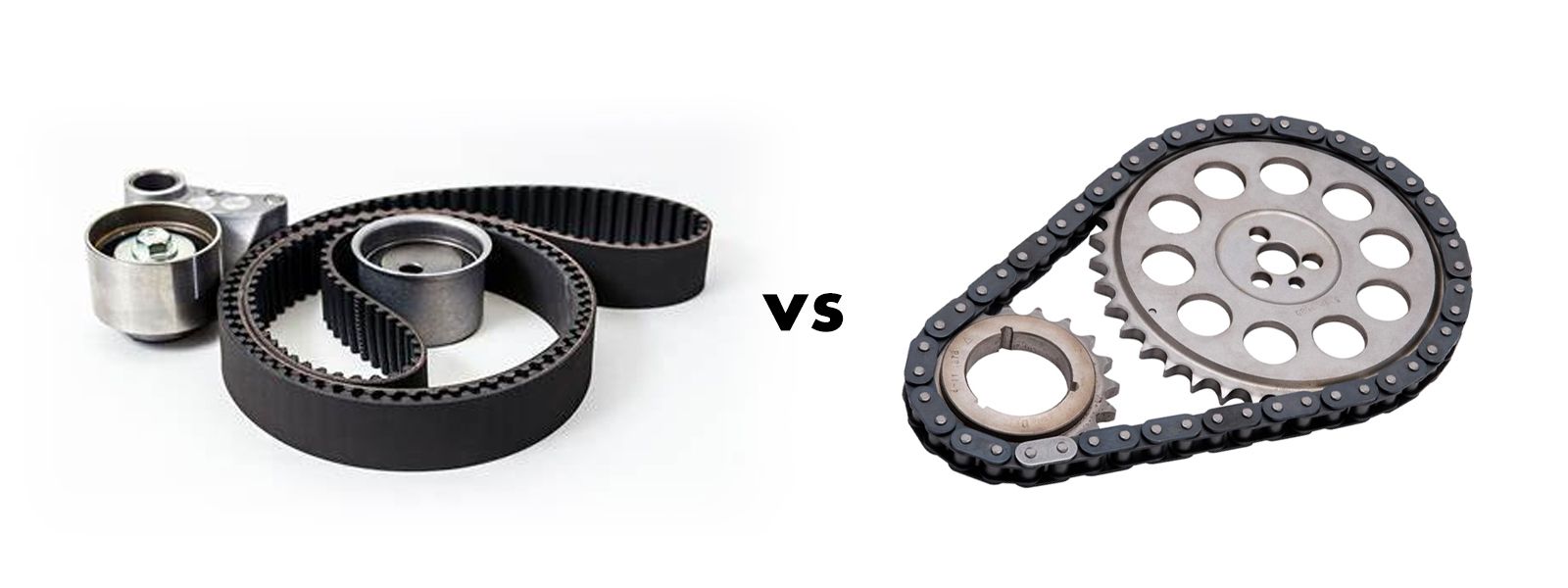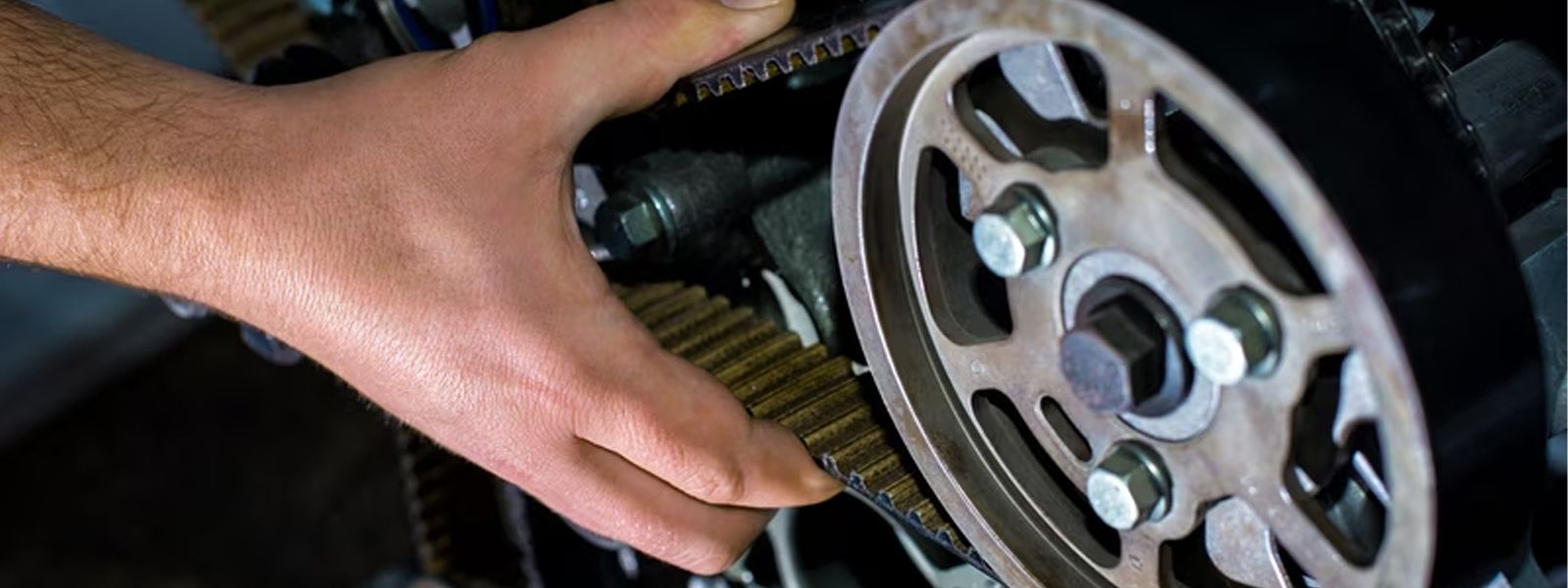
What is a Timing Chain?

Get to know timing chains and their critical function in your engine. This blog discusses the differences between timing chains and belts, details the components of a timing chain kit, and highlights symptoms of wear and maintenance tips for longevity.
A timing chain is a vital component in an internal combustion engine, serving the crucial purpose of synchronizing the rotation of the crankshaft and the camshaft(s). By ensuring that the opening and closing of the engine's intake and exhaust valves occur at the correct times relative to the position of the pistons, the timing chain plays a key role in optimizing engine performance. This synchronization is essential for efficient combustion and overall engine operation.
Timing Belts VS Timing Chain
Timing belts and timing chains are crucial for synchronizing the crankshaft and camshaft in an engine, but they differ significantly. Timing belts are made of rubber, making them lighter and quieter, while timing chains are metal, offering greater durability and a longer lifespan.
Timing belts usually need replacement every 60,000 to 100,000 miles, whereas timing chains can last the life of the engine but may require occasional adjustments. Belts require regular maintenance, while chains need less frequent monitoring.
In terms of performance, belts are quieter and often found in smaller engines, while chains are used in high-performance engines due to their strength. Cost-wise, belts may be cheaper initially but require more frequent changes, whereas chains can be more economical over time.
What is included in a timing chain kit
A timing chain kit typically includes several essential components needed for replacing or repairing the timing chain system in an engine. Here’s what to expect to find in a timing chain kit:
1. Timing chain
The main component that connects the crankshaft to the camshaft(s), ensuring they rotate in sync.
2. Timing chain tensioner
A device that maintains proper tension on the timing chain to prevent slack and ensure smooth operation.
3. Timing chain guides
These components help guide the timing chain and keep it aligned during operation.
4. Sprockets (or gears)
The chain sprockets are attached to the crankshaft and camshaft(s) and are essential for the chain’s movement.
5. Gaskets and seals
These are included to prevent oil leaks during installation and maintain the integrity of the engine.
6. Bolts and hardware
Necessary fasteners are needed to secure the timing chain, tensioner, and guides during installation.
What are the symptoms of a timing chain going bad
A failing timing chain can lead to serious engine problems. Here are some common symptoms of a bad timing chain:
Engine noise
A rattling or ticking noise coming from the engine can indicate a loose or worn timing chain.
Check engine light
If the timing chain is malfunctioning, it May trigger the check engine light on your dashboard.
Poor engine performance
A bad timing chain can result in rough idling, sluggish acceleration, or a decrease in overall engine power.
Engine misfiring
If the timing chain is not properly synchronizing the crankshaft and camshaft, it can cause the engine to misfire.
Oil leaks
A worn timing chain can lead to oil leaks, particularly if it causes damage to the timing cover or seals.
Difficulty starting
If the timing chain has stretched or jumped a tooth, it can make starting the engine difficult or prevent it from starting altogether.
Vibration
Excessive vibration during engine operation can indicate issues with the timing chain.
If you notice any of these symptoms, it’s important to have your vehicle inspected by a professional mechanic. Addressing timing chain issues early can prevent more serious engine damage and costly repairs.
Can I drive with a bad timing chain
Driving with a bad timing chain is highly discouraged. If the timing chain fails, it can lead to severe engine damage, such as piston and valve collisions, which can be costly to repair.
Additionally, a failing timing chain can cause poor engine performance, including rough idling, misfires, and sluggish acceleration. These issues can compromise safety while driving.
Continuing to drive with a faulty timing chain increases the risk of a complete breakdown, potentially leaving you stranded. If you suspect a problem, it’s best to have your vehicle inspected by a professional mechanic promptly to avoid further damage and ensure your safety.
Preventative Care: Timing Chain Longevity
Maintaining your timing chain is essential for its longevity and optimal engine performance. Regular oil changes are crucial, as clean oil lubricates the chain and prevents wear. Additionally, keep an eye on your engine’s performance; unusual noises or a check engine light can indicate timing chain issues. Addressing these problems early can help prevent more severe damage.
Proper tension is vital for the timing chain's function, so regular checks and adjustments are necessary. When it’s time to replace the timing chain, always use high-quality parts that meet manufacturer specifications. By following your vehicle’s service manual for maintenance schedules, you can significantly extend the life of your timing chain and ensure the overall health of your engine.














